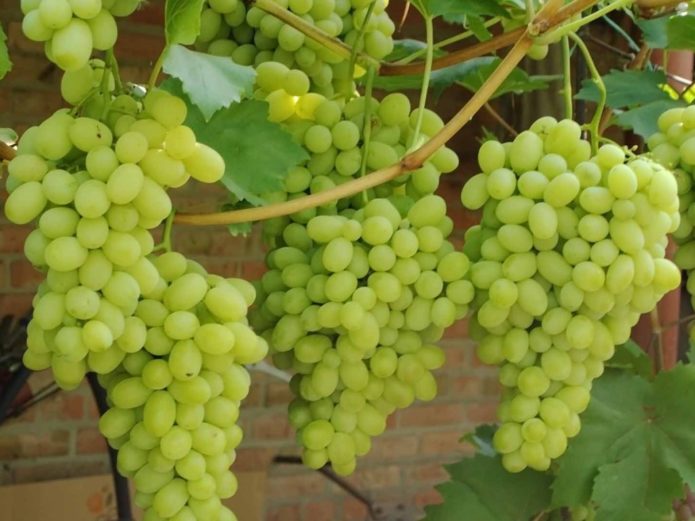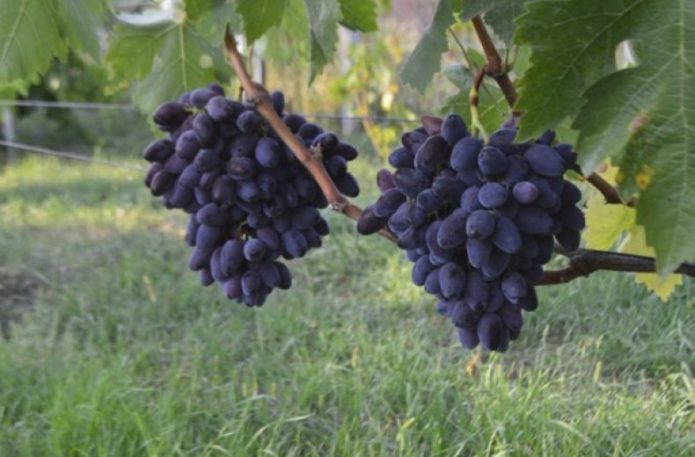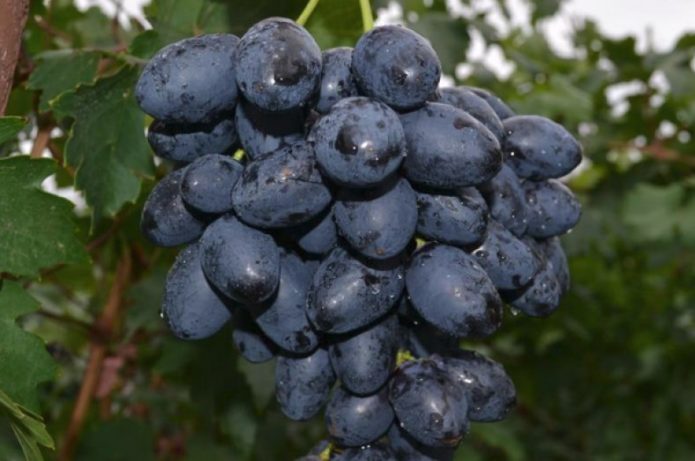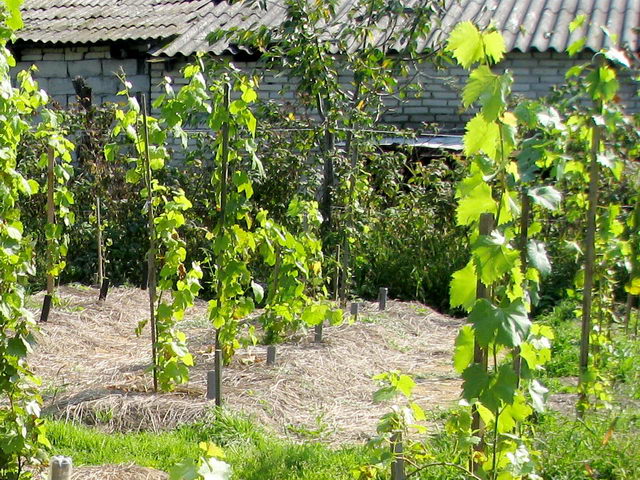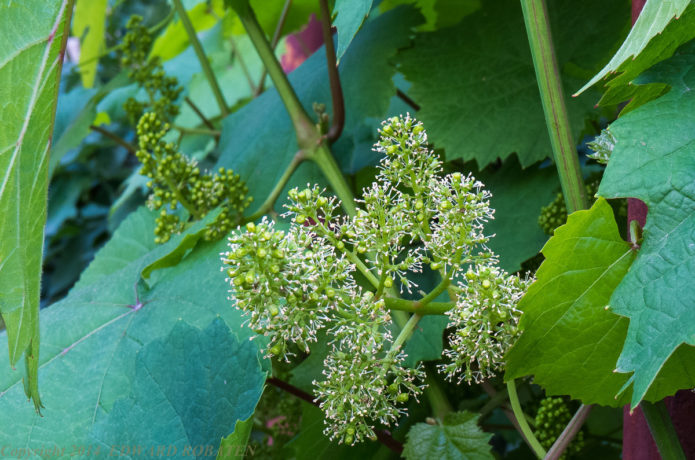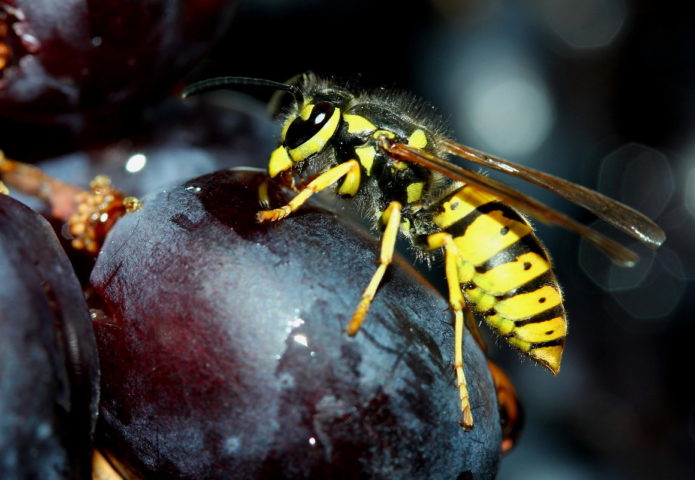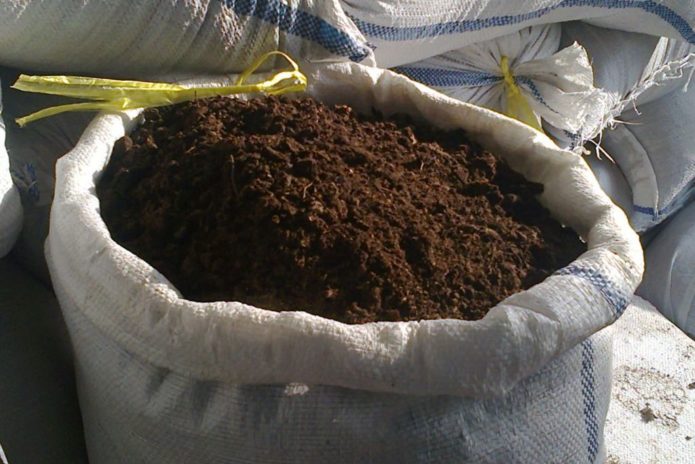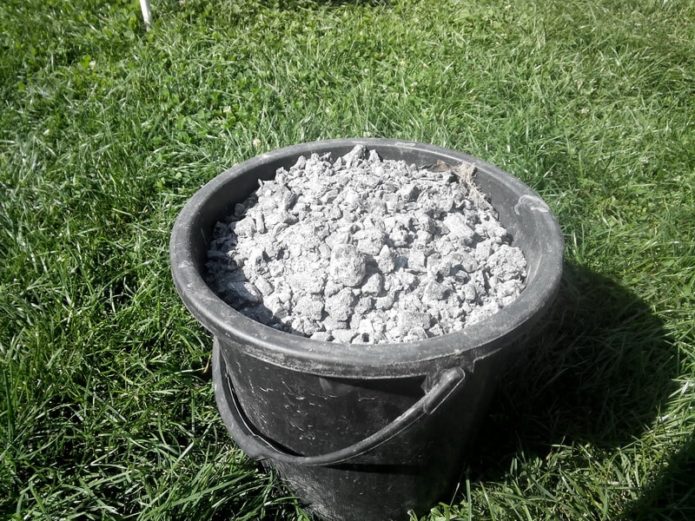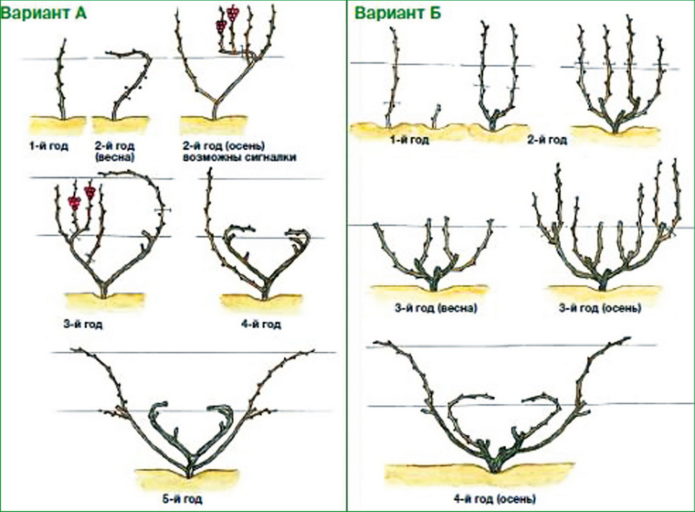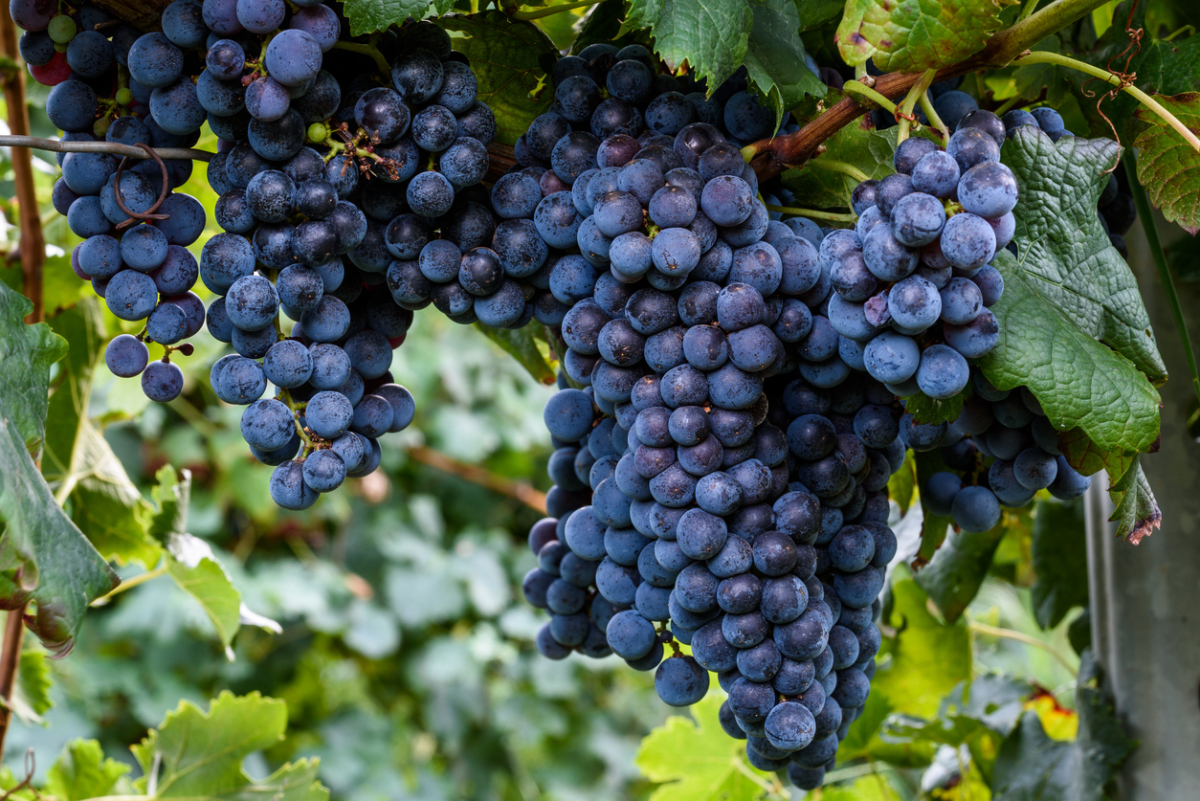The achievements of amateur breeders are often no less successful than the results of the work of professionals. One of the examples confirming this is the Furor grape. It was bred quite recently, but the cultivation experience already proves that the variety fully justifies its loud name. The berries are not only large and beautiful, but also very tasty. Furora also has other advantages, thanks to which he is quickly gaining popularity among gardeners.
Content
Description of the Furorlo grape variety, its advantages and disadvantages
Recently, not only professionals, but also amateurs have been engaged in the selection of grapes. And the achievements of the latter are often even more successful. A striking example is the Furor hybrid dining form. It was created by V.U. Kapelyushny, on whose account there are already such well-established varieties of grapes as Rumba and Descendant of Rizamata. The new hybrid is the result of pollination, which is very popular throughout the post-Soviet space Laura grape varieties (in Ukraine and in some other states it is found under the name Flora) with a mixture of pollen of other varieties, the names of which are not disclosed by the author. The grapes appeared in the public domain in 2013.
From Laura, Furor inherited the large size and the ability of the vine to grow rapidly, good disease resistance, as well as the characteristic shape of the leaves - small, not whole, with deep "cuts". The variety is already considered one of the best among the dark grape varieties in terms of taste and presentation. Not only amateur winegrowers are interested in it, but also those who grow berries for sale on an industrial scale.
Furor - grapes from the early category. From the moment of blooming of leaf buds to ripening of berries, 105-110 days pass. In the homeland of the variety, in the Rostov region, the harvest takes place in the first decade of August. This characteristic, coupled with the ability to adapt to a wide range of not always favorable weather conditions, makes the variety suitable for cultivation even in temperate climates. It also differs in good frost resistance, withstanding a drop in temperature to -24 ° C. Neither wood nor buds are affected. For the southern regions with a subtropical climate, this is quite enough to winter without shelter. In more severe conditions, additional "insulation" will be required. Although, without protection for the winter in a temperate climate, it will not be possible to grow the vast majority of cultivated grape varieties.
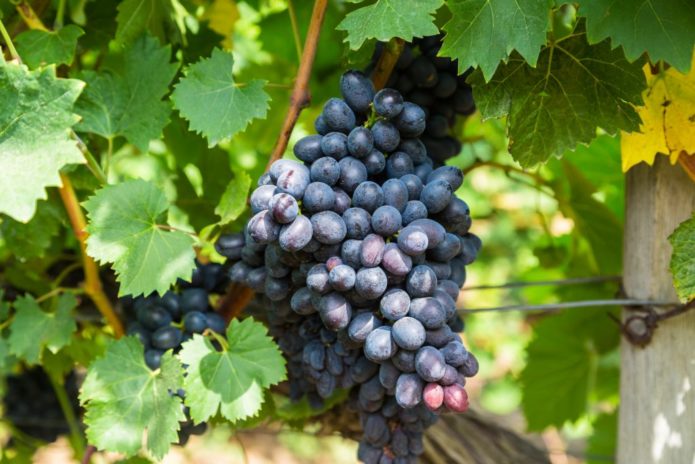
The Furor grapes are appreciated by gardeners primarily for their amazing taste, but this is far from its only undoubted advantage.
Rizamat is a liana-like, very vigorous bush, distinguished by its special strength and growth rate:https://flowers.bigbadmole.com/en/yagody/vinograd/vinograd-rizamat-opisanie-sorta-foto.html
Video: Furor grape variety
The variety is characterized by good (at the level of 75%) and early ripeness of shoots. This is largely due to the consistently high yield. Another factor that has a positive effect on it is the buncation of flowers. Furor is pollinated with minimal participation of insects or none at all. This is especially valuable if the spring is cool and rainy. He himself is an excellent pollinator for any varieties blooming at the same time with unisexual flowers.
Furora's brushes look very impressive - large (weighing up to 1.5 kg), slightly loose. Berries also stand out in size. With a length of about 4 cm and a width of 2.8 cm, they reach a weight of 25-30 g. The shape of the grapes is rounded-conical, the surface is slightly bumpy.
The skin is painted in a deep purple color, from a distance it seems black, covered with a thick layer of bluish-blue wax coating, which gradually disappears as it ripens. Ripe berries acquire a light glossy shine.
The skin is thin, almost not felt when eating, but strong enough so that the grapes do not suffer from wasps and do not crack massively during prolonged rains. Its durability provides Furora with good transportability. If the crop is not harvested on time, the fruits can remain on the vine for a long time, without crumbling, without decay, while maintaining presentability and richness of taste. Some gardeners, when the weather is favorable, deliberately do not remove the bunches for a long time so that the berries gain maximum sugar.
Rumba grapes are a fairly young variety of very early ripening period, characterized by unpretentious care and excellent commercial properties of berries:https://flowers.bigbadmole.com/en/yagody/vinograd/vinograd-rumba-opisanie-sorta-foto-otzyivyi.html
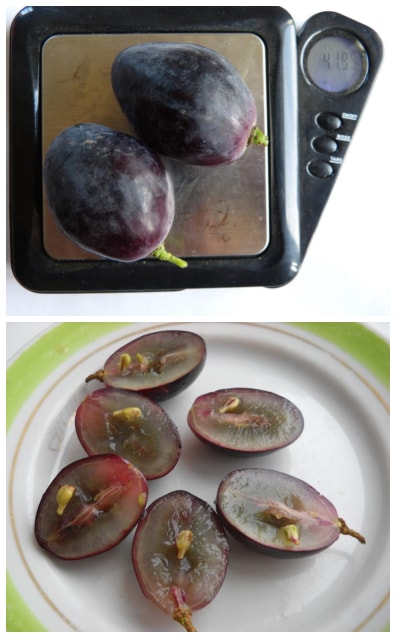
The peel of the Furora berries is thin, but at the same time strong: it protects them from wasps, provides good transportability
The flesh of the grapes is greenish-pink, dense, even slightly crispy, but juicy. It has a light nutmeg aroma and a delicate aftertaste with hints of cherry. The taste is simply wonderful and balanced. The sugar content of fully ripe berries reaches 21–23% with an acidity of 5–6 g / l. There are few seeds, 2-3 pieces in each berry, they are not large. The purpose of grapes is universal. In addition to fresh consumption, it is suitable for winemaking and home canning.
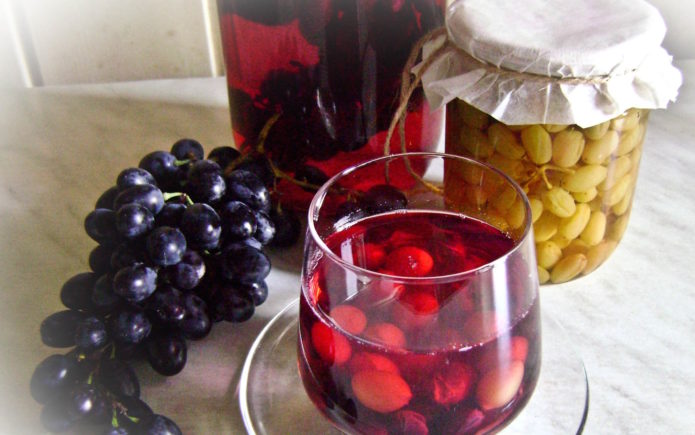
The nutmeg aroma and unusual aftertaste characteristic of fresh Furora berries are preserved in compotes, jam, and other homemade preparations.
Reproduction of Furora is not a problem. The experience of gardeners shows that cuttings take root when grafted onto rootstocks of various grape varieties. This allows, for example, to increase the frost resistance of the plant. The planted seedlings also root quickly and successfully and demonstrate good growth.
Video: Furor grape harvest
The creator of the variety declares a high degree of resistance to the most dangerous fungal diseases for the culture - mildew, oidium, gray rot. There is no data to refute this yet. Comparatively rarely, Furor suffers from other diseases.

Mildew is one of the most dangerous diseases for the culture, capable of completely destroying the vineyard; Furore to protect against it is quite enough preventive treatments
One of the few disadvantages of the described grape variety, oddly enough, is its high yield. The vine consistently forms more fruit clusters than it can supply with nutrients for ripening. Often, the whips simply break under the weight of the crop. Therefore, Furor needs regular pruning, tying to a solid support and careful rationing of the future harvest. The optimal number of "eyes" for this variety is 35–40 pieces, 6–8 on each vine.
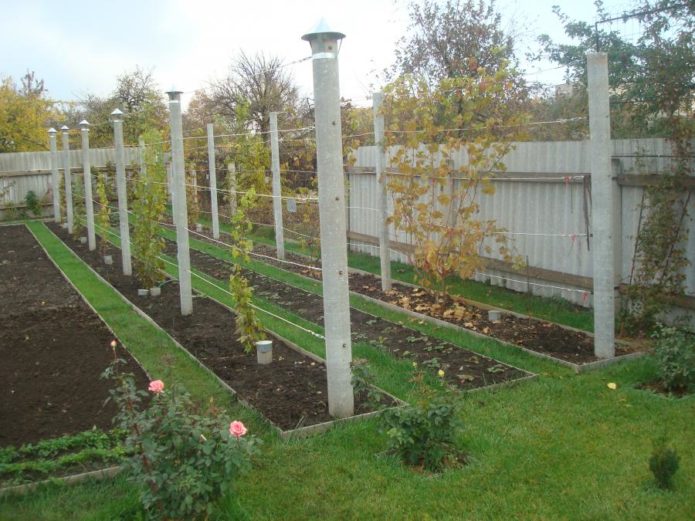
The simplest version of a trellis for Furora is a wire stretched horizontally in several rows between the posts
What you need to know about the disembarkation procedure
For normal growth and development, Furore needs warmth and sunlight. Consider this when choosing a location for the vine. The best option in this case is a small hill on the southern or southeastern side of the site. A place near the southern wall of a house or other structure is also well suited. It will provide protection from cold drafts that the variety does not like. Regular gusts of the north wind greatly inhibit the development of the vine and the ripening of the crop, drafts during flowering are especially dangerous. A fence, a hedge, a "curtain" of tall annual plants can also play the role of a barrier.
Furor is generally unpretentious to soil quality. Chernozem is considered an ideal option for him, although he is able to take root and yield crops even in a heavy clay or light sandy substrate. The only thing that the vine will definitely not tolerate is groundwater close to the soil surface. When they are less than 3 m underground, look for another place or build an embankment at least 60-70 cm high.
Furor develops best in a weakly acidic substrate. If the soil in your area is excessively acidic, add dolomite flour or slaked lime to the soil. The alkaline substrate can be neutralized by adding sawdust of coniferous trees or simply needles to the planting pit. Then the procedure will have to be repeated every 2-3 years.
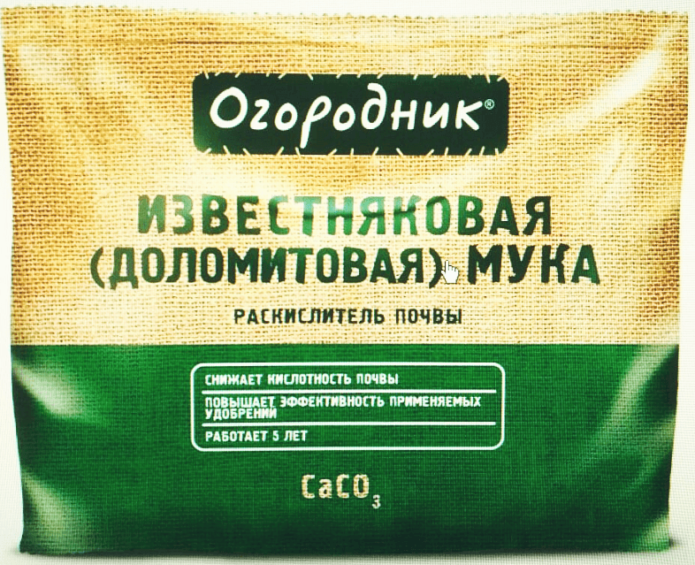
Dolomite flour is a natural remedy for soil deoxidation; at the correct dosage, it has no side effects
The vine at Furora stands out for its growth rate and strength. When laying a whole vineyard, at least 3-4 m is left between adjacent seedlings with a row spacing of 5-6 m. Provide a place in advance for a reliable support or trellis. This variety will certainly need it.

Over time, the Furora vines grow strongly: keep this in mind when planting several seedlings at the same time
As for the timing of disembarkation, there are no restrictions. Be guided exclusively by the climate in your own region. Gardeners in the southern regions prefer autumn planting, planning the procedure for the second half of September, because they can be sure that the plants will have time to take root in a new place before the frost. In regions with temperate and more severe climates, it is better to focus on late spring or early June. Over the summer, the seedling will get stronger enough, form a developed root system. By the way, the plant is powerful, so you need a hole with a depth of at least 80 cm and about the same diameter.
Video: preparing a planting pit for a grape seedling
The landing pit for the Furora is always prepared in advance. Until the moment of disembarkation, at least two weeks must remain. If the procedure is planned for the spring, it is better to do it in the fall. A drainage layer is required at the bottom. This variety has a very negative attitude to the stagnation of moisture at the roots. About a third of it is filled with a nutritious mixture of humus or rotted manure with a complex nitrogen-phosphorus-potassium fertilizer. From above it is covered with a layer of fertile soil 4–5 cm thick so that the nutrient mixture does not burn the roots of the seedling. In case of possible rains, the pit is covered with something waterproof.
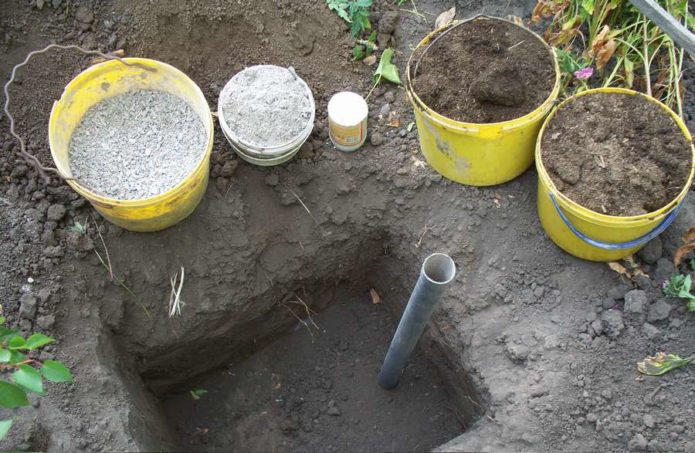
At the bottom of the planting pit for Furor grapes, a drainage layer with a thickness of at least 8-10 cm is required, this will not allow moisture to stagnate at the roots
If a Furora seedling with a closed root system was purchased, there is nothing complicated at all in the planting procedure. It is enough to water it abundantly, remove it from the container, transfer it to the planting hole, fill it to the brim with fertile soil and water the plant with 20-30 liters of settled water.
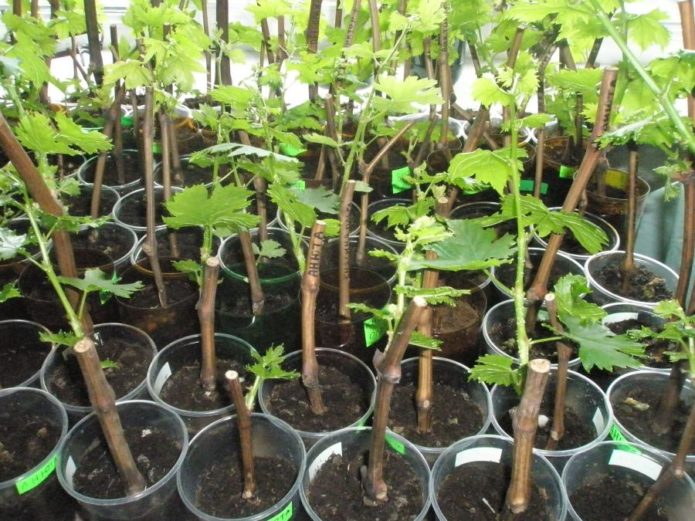
Be very careful when choosing grape seedlings: high-quality planting material is a guarantee of a future bountiful harvest
For plants with open roots, they are pre-pruned by about a third, then they are dipped into water at room temperature for a day with the addition of any biostimulant. The roots in the planting pit are carefully straightened, it is filled with soil carefully so as not to damage them.
After planting, immediately tie the seedling to a temporary support, otherwise it will creep along the ground. Mulch the soil to prevent weeds and retain moisture in the soil.
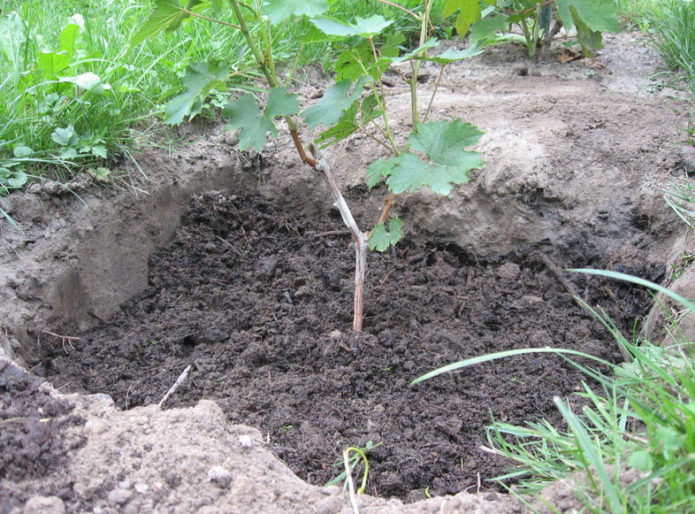
There is nothing difficult in planting grapes in the ground, even a novice gardener can cope with this
Video: planting grapes in the ground
Important nuances of agricultural technology
The Furor grape has been cultivated relatively recently, but most gardeners who are familiar with it describe it as unpretentious and not capricious in care.
Since the variety belongs to the category of early ones, it necessarily needs two water-charging irrigations in the fall and one in early June. The soil is then loosened each time. The ideal option is to water through pipes dug into the ground in advance. This system is also suitable for the distribution of liquid fertilizers.
Spring work with grapes - the first treatments, garters, fertilizing and frost protection: https://flowers.bigbadmole.com/en/yagody/vinograd/vesennie-rabotyi-s-vinogradom-posle-zimyi.html
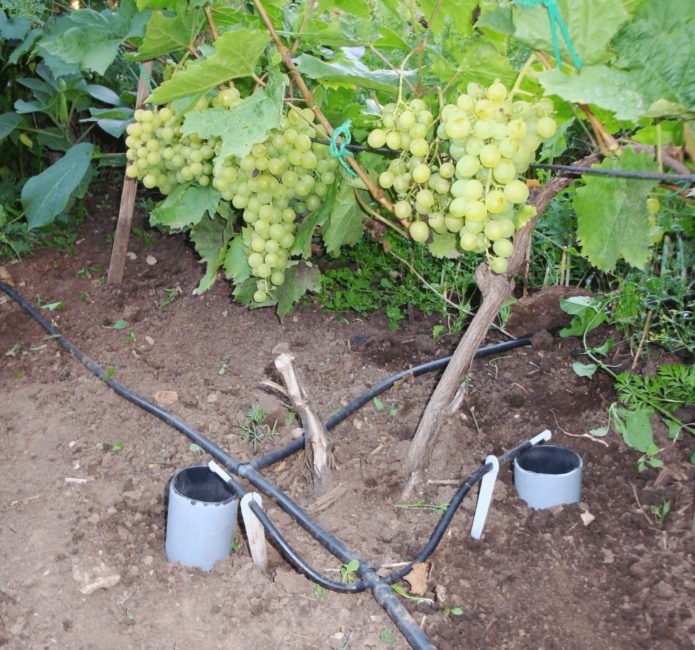
Sections of pipes dug into the soil allow water to be delivered to the roots of grapes - they are developed in the plant, go into the ground by 5-6 m
From the moment the inflorescences appear, soil moisture is stopped, resuming it during the growth and maturation of the brushes. Sometimes natural precipitation is enough, do not overdo it. With an excess of moisture, the Furora berries crack or the pulp becomes watery, does not gain the necessary sugar content.
Another drawback of excessively abundant watering is that wasps fly en masse on cracked berries. The furor in the normal state does not interest them, insects are not able to cope with a strong skin. But when it is damaged, the grapes spread a characteristic aroma that attracts wasps like a magnet. It will be almost impossible to save the harvest. But the birds will have to fight in any case.
This grape variety reacts equally positively to both mineral fertilizers and natural organic matter. The latter is brought in annually, in the spring, digging a groove around the base of the vine about 50 cm deep. 10-15 kg of humus or rotted compost are poured there, and ordinary soil is placed on top. During the season, humus will gradually erode during rains and watering, nutrients will get to the roots.
Of the mineral fertilizers, Furor most of all needs phosphorus and potassium. You can use one-component top dressing in dry form or in the form of a solution, but the best option for a crop is complex fertilizers (Kemira, Master, Florovit, Solution, Novofert, Aquarin).

Complex fertilizers contain most of the macro- and microelements necessary for grapes in the right concentration
Those who prefer natural agriculture can use infusions of wood ash, dandelion leaves, nettle greens. Enough 2-3 dressings per season. Fertilizers must be applied at the time of budding and when the brushes are formed.
Pruning for a vigorous and powerful Furora is an annual procedure. The main part of the work is carried out in autumn, when all the leaves fall off. By this time, the process of sap flow freezes, the procedure will be painless for the vine. From the sections made in the spring, juice oozes for a long time, the "eyes" from it become limp, they can even rot.
First of all, remove all dried, dead lashes and those branches that no longer bear fruit. Then they get rid of weak and thin shoots that prevent normal aeration, clearly knocking out of the configuration set for the vine.Then formative pruning is carried out. If Furor needs to be covered for the winter, choose from standard forms (fan or cordon). The easiest option for novice gardeners is Guyot pruning. Such vines are easy to remove from the support, but they also freeze out most often (this is due to the lack of perennial wood), so a reliable shelter will be required.
It is necessary to ration the crop. To form large brushes, leave no more than 3-4 pieces on each shoot, removing unnecessary clusters and inflorescences. Furor is capable of bearing fruit already in the second year after landing in the ground. It is especially not recommended to overload such a young plant. Leave two, maximum three brushes, one on each shoot.
Video: the formation of a fan crown of grapes
Do not forget to monitor the condition of the Furora vine during the summer. At this time, if everything is going well, the variety is characterized by extremely active shoot growth. When the process stops (the tops are straightened), this means that the plant is spending too much nutrients on the fruit. It is necessary to remove a few brushes to ease the load, otherwise the vine will not ripen properly and freeze in winter. Even in summer, you need to cut off excess leaves that prevent normal aeration.
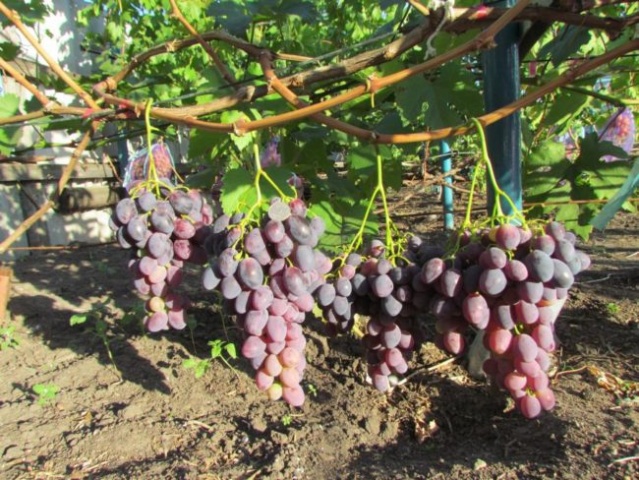
Furora's yield is consistently high, but do not overload the vine - you will get the opposite effect (brushes and fruits become smaller); for the plant itself, this is also harmful
Video: preparing grapes for winter
Furora's preparation for cold weather is especially important if winter is forecast with little snow or unstable. For this variety, it is not so much frost that is terrible as repeated thaws and drops of positive and negative temperatures. A covered vine can resist; in an open one, leaf buds that have begun to open are often seriously affected. But even if the grapes are badly damaged in winter, there is a good chance they will recover. During the next season, a furor crop will not bring, but will form new shoots from replacement buds.

Furor grapes have good frost resistance, but when grown in temperate climates, you will need shelter for the winter
The creator of the Furor variety is positioned as resistant to the main diseases of the culture. In order to prevent their development, preventive treatments are quite enough. During the growing season, the vines are sprayed 6–8 times with a solution of any fungicide. It is advisable to use drugs of biological origin (Baikal-EM, Alirin-B, Maxim, Bayleton). They do not harm the environment and are safe for humans. Also suitable for processing is a solution of colloidal sulfur, soda ash, potassium permanganate (pale pink).
Video: recommendations for growing grapes
Reviews of gardeners about the Furor grape
Furora's pulp cannot be called juicy, even when overloaded. The grapes are quite dense, tasty, well taken in the market. On the plus side, I also have it because the wasps on it are on single berries. The berry itself seems to be bumpy to the touch. In terms of timing, it does not pull very early. An excellent working grape, the only thing is not yet clear how it reacts to excessive moisture.
Two powerful showers passed (per day), not a single berry at Furora cracked. But in some berries, the pulp became mushy. For the market, these bunches are lost - you will not try every berry, especially since they do not stand out outwardly. Such is the situation. I watched. The sugar content was restored and added, but the pulp stuck halfway. I decided not to tempt fate and cut it off - no one would call it sour. Today I sold it without question - they tried it, and they said it was sweet, they bought it. But still, I can't imagine how Furora can have dense flesh if it is juicy.
Furor is a table hybrid form of selection by V.U. Kapelyushny. Early maturation, 105-110 days. The bunch is large, loose, weighing 800-1500 g.The berry is very large, oval, black, weighing 20–30 g. The flesh is firm, juicy and crispy. The taste is harmonious, with a fruity flavor. The berry contains 1-3 small seeds. Ripening of the vine is good. Recommended pruning of vines for 6-8 buds, bush for 35-40 buds. Does not crack, is not affected by wasps. Decent early ripening, stable, marketable grape variety.
I'm happy with the furor. True, I overloaded a little for the first fruiting. Own rooted bush. Good taste, berry with crunch. They took well on the market.
This year, pollination on Furora is not quite good, although in general the yield is good, but the clusters turned out to be loose. The taste is, of course, wonderful.
I will honestly say that this season I am very pleased with the Furor grape on my own rooted bush with the first fruiting. He coped with the load normally. The vine ripened without problems and to the very ends. No signs of disease were observed. The bunches are very elegant and attractive. The berry is large, with a juicy pulp and crunch. When biting into the mouth, there was truly a sensation of taste. No, there was no special sophistication, but there was some incomprehensible sensation that required repetition. And so the bunch disappeared in a moment during the tasting. And it was not a shame to treat friends to such grapes. On the grafted sleeve, this effect did not work. Perhaps there was an overload. The berry had a watery pulp. The grapes were hung until October in the hope of gaining sugar and flavor. But alas ...
I have a furor at my roots. The seedling was from VU Kapelyushny. It reacts very badly to overload. Although the berry is large, beautiful, tasty. The pulp is dense, the taste is harmonious, fruity tones are heard. The bunch is loose. This year there were few berries that were very different from the rest.
There are varieties that are very pleased. And in the first place Furor. I liked the taste very much: the berry is firm, the flesh is crispy and at the same time splashes with juice (this is how you roughly bite off a hard juicy apple). The taste is very harmonious and rich. We are sure that under normal load, the berry will really hold out to 20-25 grams!
Furor grapes taste very good! I (and not only me) tasted cherry jam in the berries. Very unusual.
Furor grape is one of the novelties of amateur selection, which gardeners quickly appreciated. It combines relative simplicity in care and frost resistance with high yield, visual appeal and large berry size. Like any other variety, caring for Furor has its own nuances, which you need to familiarize yourself with before planting plants. Nothing supernatural is required from the gardener.
